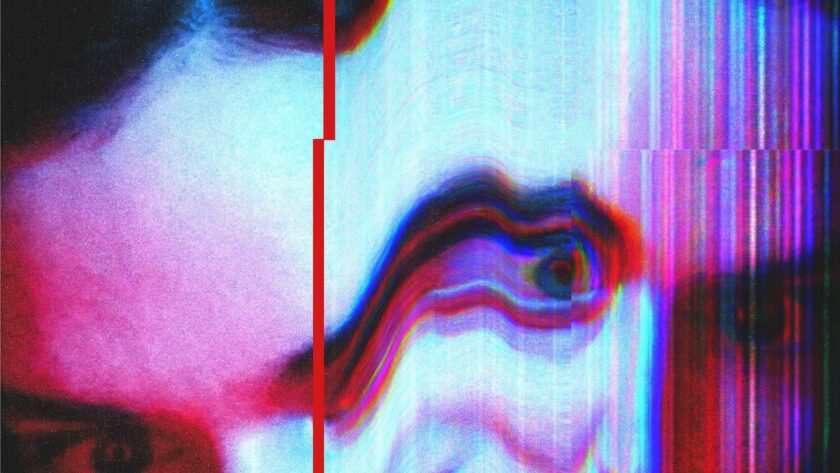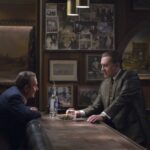Alex Dewing interviews filmmakers Isa Mazzei and Daniel Goldhaber of the recently released horror film, Cam, discussing the film and themes explored.
Isa Mazzei and Daniel Goldhaber’s passion project Cam is intense and gripping in every aspect, and a pleasant surprise especially as a debut feature. Revolving around an erotic webcam performer who finds her identity and channel stolen by a doppelgänger, the film ventures into the arena of sex work, in particular of cam girls, breaking the stigma and taboo that surrounds the sex industry and exploring questions relevant to our age of social media, where one and one’s online identity are indisputably linked. FilmSoc’s Alex Dewing had a chance to sit down with Goldhaber and Mazzei, the latter who based the story on her own personal experiences as a cam girl.
The transcript has been edited for clarity.
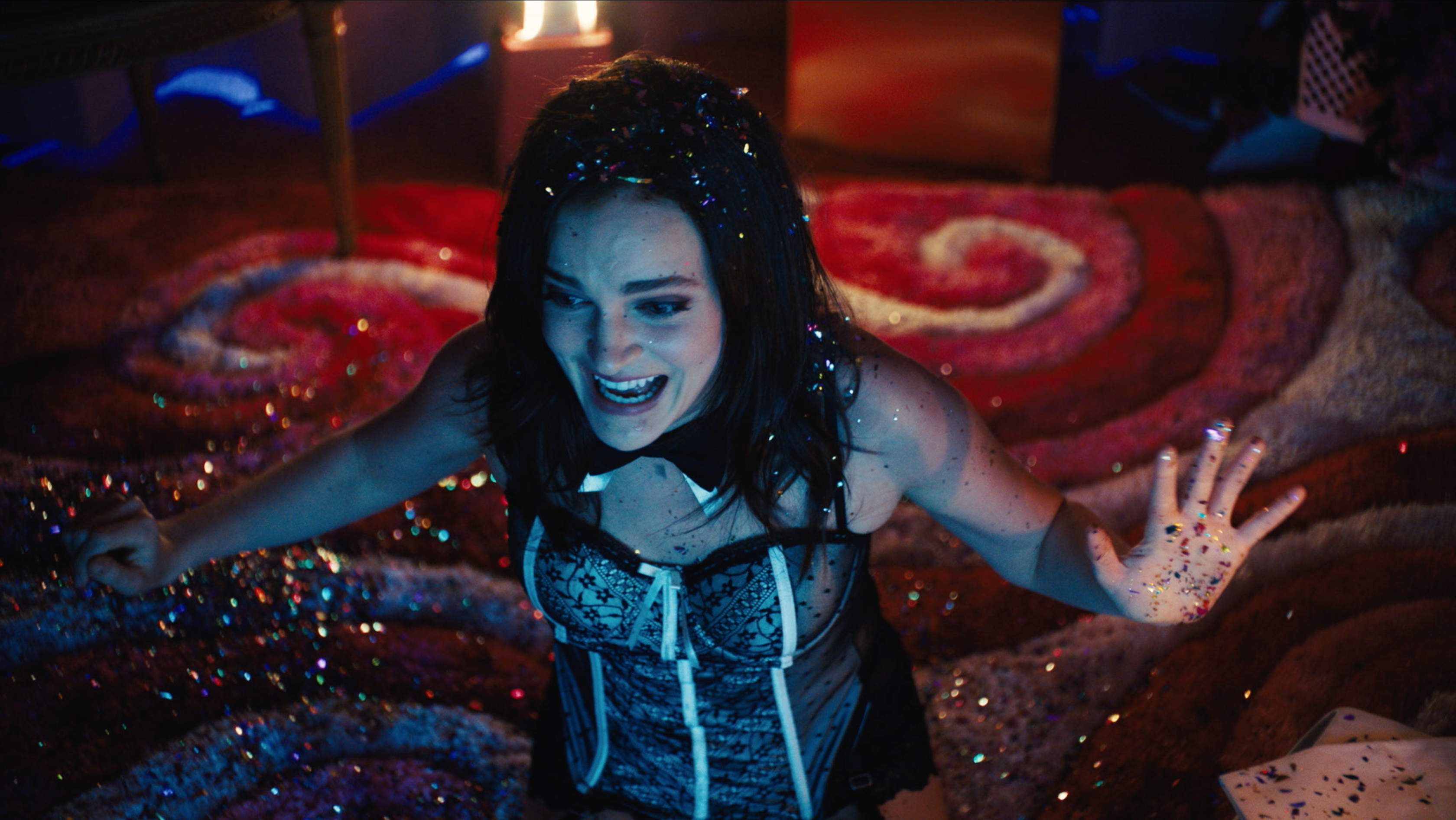
UCL FILM AND TV SOCIETY: So, first of all, I just wanted to say congratulations on the film, I managed to catch it at the London Film Festival and know that it is your directorial debut and your debut screenplay.
DANIEL GOLDHABER: Thank you.
FILMSOC: I thought I’d jump straight into the deep end. Cam doesn’t skate over the aspects of its backdrop of the sex work and camming industry and I wanted to ask how you achieved that balance of celebrating female sexuality without ever going too far into exploitation.
ISA MAZZEI: I think for us the main goal was to make a film where an audience would empathise with a sex worker. I worked as a Cam girl myself for a couple years so we were really sensitive to those issues and we never wanted any of the nudity or sexuality to feel exploitative or to ever invite the audience to objectify Alice’s body and so, we made a lot of conscious decisions in that we had a nudity writer, for legal reasons, but at the end of the day when [Madeline Brewer] showed up on set she decided how naked she was going to be. We trusted that she knew Alice better than we did, and so she knew “Oh Alice in this scene would be more naked than written or in this scene Alice would be less naked than written”. That was a really important collaboration between the three of us that really, I think, led to the authenticity of the nudity because Alice is only nude when Alice would actually be nude as a character in her own psychology and that’s really important. It’s never done for the audience’s gaze, it’s done as part of Alice’s journey.
DG: Something else that we were really careful about is [that] the movie is told from Alice’s point of view and so it was really important that the movie never felt like it had a male gaze from a kind of camera framing compositional standpoint. That was something I was reasonably familiar with, but only to a certain degree of how to strip a male gaze out of a movie. And so Isa was on set and she was extremely involved in that and we had a female DP, we had a predominantly female crew, but there were still moments we were shooting where Isa would run up to me and be like “This is a very problematic shot”. I would be like “No it’s not, we’re shooting the bow tie” and she’s like “No, but it feels like you’re shooting her tits”. It was this thing were, because there is such a legacy of objectifying imagery that dehumanises female characters, it was really really important that we don’t even incidentally bump up against it. So it’s really important that you have people and, as a male filmmaker, people around you who have that kind of vision and that you step back and listen to them.
IM: So often we default, just like Danny was saying, to the standards of filmmaking that cater to the male gaze. I know, not just with that shot, but there was also that time where Maddie took her top off and this call went around set: “Where’s the ice for her nipples?” And we’re all like, “Where’s the ice? Where’s the ice?” and a PA went to get ice and even for me it took a second to go “Woah woah woah, why would we ice her? Why would we do that?”. It’s just an expected standard in the film industry that even a very enlightened crew, and mostly women all working together, still don’t think of it. So it takes this act of engagement constantly to strip the male gaze out of a film, you can’t just do it just by hiring women, it has to be a really deliberate thought process.

FILMSOC: That’s really interesting. I know you mentioned you had a sort of manifesto for the making of this so I imagined that had a large role in that thought process. What sort of rules did that contain?
DG: It was absolutely and, I don’t actually remember everything on it because a lot of them were general guidelines; in many ways the process of making the film was the process of translating the generalities of the manifesto to the specifics of a movie. They were things like ‘the movie is never going to judge Alice for being a sex worker’ and ‘the fundamental stakes of the movie is that she has lost agency over her body and over her work, not that she is a sex worker and needs to leave’. I mean that was kind of the fundamental one but there were a lot of other little things, like we knew we needed to have a female DP, we knew that Isa needed to be on set-
IM: We wanted Danny to cam actually.
DG: Yeah.
IM: It was really important to me that he actually go online and feel that vulnerability of exposing yourself to strangers on the internet so that he could kind of relate to Alice and the story a little more, so he actually cammed for a week- two weeks?
DG: A week.
IM: So there was a lot of different types of things on it.
DG: Wanting that our direction and thought process with the men in the film – the cam viewers – are always acting rationally for themselves, that even if they’re coming off as creepy, even if they are behaving violently, that the conversation that we’ve had with them about their intentionality, the way they’ve been written, was that for them they’re just doing all that they know. And that was something that I think both actors brought to those roles that makes their performances and those characters more complex.
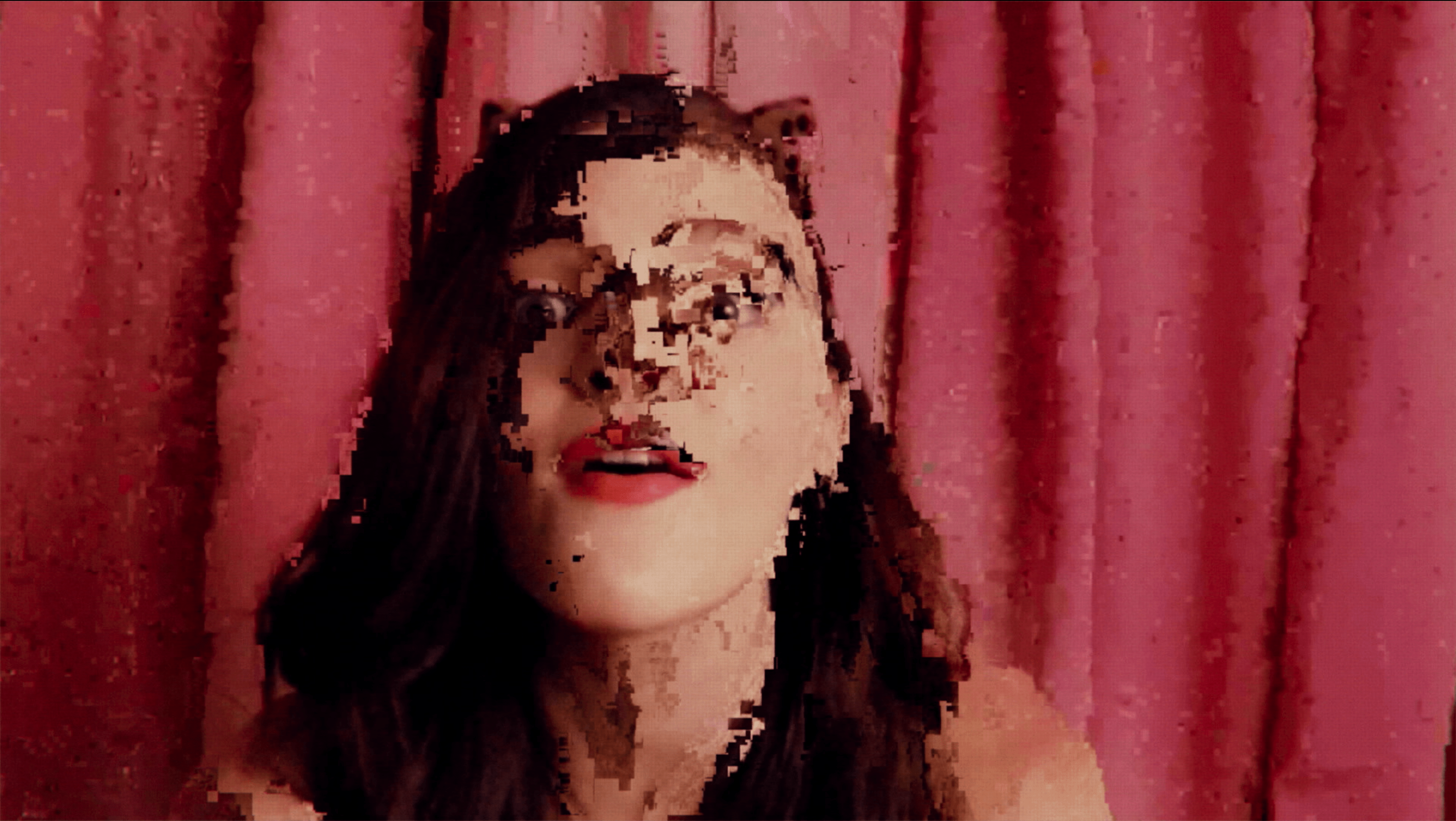
FILMSOC: You mentioned Alice’s agency and how losing that agency is what the film explores and I read that you saw the film as a reflection on the digital identity. Something I thought was really interesting was that you don’t condemn the digital identity, you promote the importance of having one and having control over it. Was that something you always wanted to explore?
IM: I think we knew from pretty early on that it was about digital identity. I think we weren’t quite sure where we settled on it until we were really delving into the story, but I know for us part of Alice’s journey is, yes she goes back [to camming] which politically is about a return to sex work, but it also is this return to digital identity. If you’ll notice, something I think that was baked in to the story was that initially there isn’t really a distinction between Alice and the Lola she performs, she doesn’t really wear a lot of makeup, she’s just herself online and Lola represents this fracturing of this digital identity when all of a sudden this persona has split off from her. And at the end when Alice embraces makeup and performance and has fully separated herself from who she’s performing as EveBot, she’s nothing like her. For us, that’s just a commentary on being aware of these digital identities we create. We love social media, we love the internet, we love Twitter, we also hate it but we love it and don’t think it’s realistic to say “Stay off the internet”, but it is important to be aware that we are performing when we’re online and that other people are performing for us as well. That’s just an important thing to keep in mind and we really did want to point that out.
FILMSOC: Cam is marketed as a psychological techno-thriller rather than an out and out horror, which again I thought was really interesting as a Blumhouse production. Did you ever consider taking it further a supernatural route or even further in the horror genre?
DG: I don’t think so. Personally, I have trouble distinguishing between a thriller and a horror in a lot of ways and for a lot of ways it does have to do with that supernatural creepiness but also it has to do with jumpscares. And jumpscares aren’t something that particularly interest me as a filmmaker. But a lot of people absolutely classify Cam as a horror film and its generally been programmed in mainstream film festivals in the horror category, so I definitely think that for a lot of people, especially because there is that supernatural hook of the doppelgänger, there is that supernatural-y horror-y bend to it. But ultimately, what we imagined Lola as was an embodiment of the social media algorithm, the same way that Facebook is run by an algorithm or Twitter is. So in terms of clarifying it more as a supernatural thing, we didn’t feel like we wanted to because we were trying to reflect the way that for Alice – what she cares about is getting back to her show and that she doesn’t question, necessarily, how this is all working because none of us really question how social media works. We just accept it as a given, even when it goes horribly wrong.
FILMSOC: I feel like having that in mind when watching the film will really change the way you watch it.
DG: What was your experience in categorising it?
FILMSOC: Oh, I went in quite blind. I remember seeing the poster and being intrigued by that-
IM: It’s great right!
FILMSOC: Such a great poster – the whole design of this film is so strong. For the film, I didn’t know what to expect but it does quickly set itself up as not your typical horror.
DG: I think that’s the stage we want to be in. Movies that are creepy or flirt with all these different influences and genres, pulling from David Lynch or David Cronenberg, or another director named David maybe.
IM: [Laughs] Lots of Davids!
DG: We’re saying, “Yes this is a genre but it’s more than genre, it questions genre.” I think that’s a really exciting place to be.
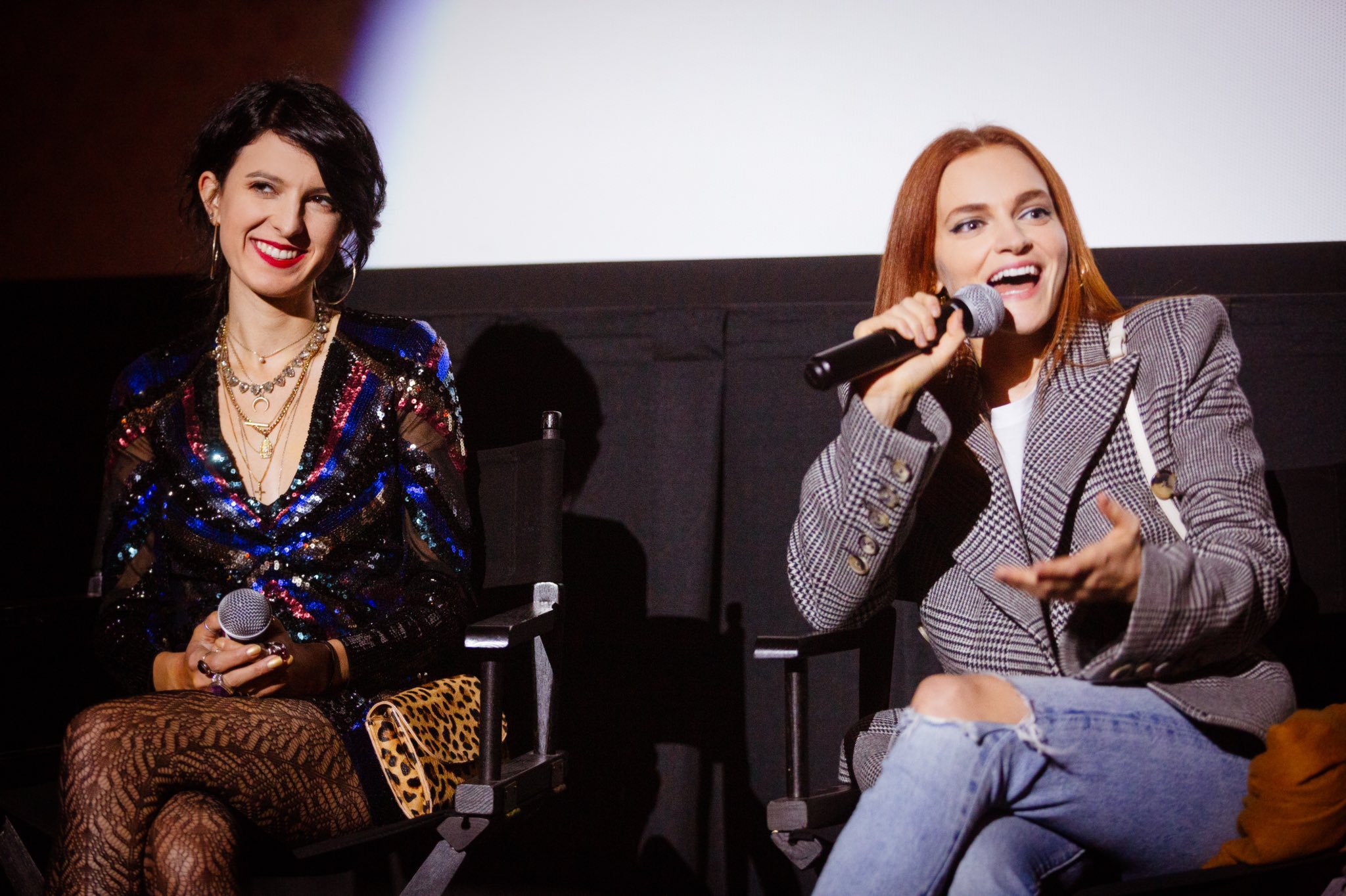
FILMSOC: Definitely. Before we wrap up I just wanted to expand on the production design. How much influence you had, how it was working with CHIPS [New York based design studio] to get that look of the film.
IM: I mean, we had full control over everything. That’s what was great about working with Blumhouse, they let us do exactly what we wanted which I think is so rare in this day and age in Hollywood. Especially for young filmmakers and especially for female filmmakers. To have a major company like Blumhouse say “do what you want” was pretty cool. We built this site [the online Camming website], we designed it, we really wanted it to feel like cam sites feel. There’s a lot of different types of cam sites but fundamentally a lot of them feel pretty dated and they have these weird emojis and weird gifs, so that was a really fun experience for us, building the site. And we did build an entire interactive site so that Maddie would have something to respond to live, because when you’re camming your eye line is really important: you’re watching yourself, then you’re checking your rank, then you’re responding to your guys or reading messages and we wanted her to laugh at real jokes that were in those chats. And for the poster that was pretty much-
DM: – I mean we didn’t really have any money for a poster but we really wanted to do something that would feel special, so I found this designer through a friend of a friend. I met her and her work was really cool and I was like “I will give you, essentially, no money to design a poster” because it was what we had. And I was like “whatever you want to make is going to be our poster, make anything. I’m going to give you no requirements for it”. And that was her first draft. We fiddled with the size of the fonts but other than that-
IM: She’s insanely talented.
DG: And it was cool for her because rarely do you just get to make a thing for a film with no notes. So, that was a great experience. I think the other thing to call attention to in the design and look of the film is that it’s also one of those cool things where we were able to mine aesthetic territory from the story itself, and from wanting to make camming feel like this fantasy space, wanting the real world feel like this much less stimulating space, still aestheticised, still in the same world of the movie but the colour palette is much more drained whereas camming is this hyper-stimulating neon fantasy. That was kind of our idea at the beginning and it was just through collaboration with Emma Rose Mead, our production designer, and Katelin Arizmendi, our director of photography, that we were really able to breathe life into that. I am really insanely proud of the work the whole production team did. And, just to give him a shoutout because I don’t think it gets nearly enough credit, our locations manager. It goes down to somebody like that who has so much influence over the world of the movie. We wanted the world of the movie to have this anywhere-USA feeling, and we were shooting in Los Angeles so we decided arbitrarily to set it in New Mexico. We love New Mexico but there was no real reason it had to be there, we could have set it in Georgia or North Dakota. But that gave Jesse [Berger], our locations guy a target to hit. So really any aesthetic success, or any success at, goes down to the entire team and what they brought to it.
Cam is currently released and available to stream on Netflix. Check out its trailer below:

